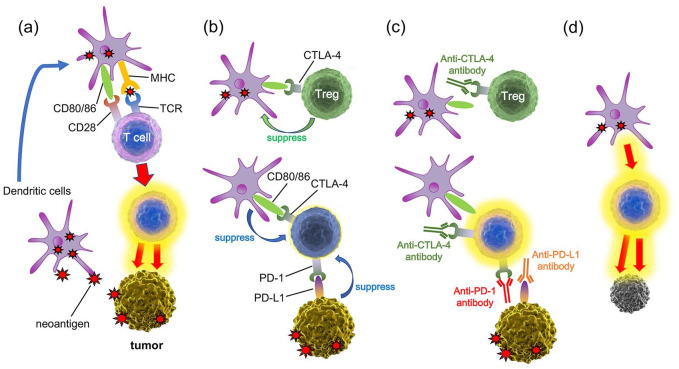Figure 1.
The action mechanisms of immune checkpoint inhibitors. (a) Dendritic cells that have recognized neoantigens activate T cells via the TCR and the second signal generated by the binding of CD28 to CD80/CD86, and the activated T cells attack the tumor. (b) Tregs suppresses dendritic cells via CTLA-4, leading to a reduced ability to prime naïve T cells. CTLA-4 on activated T cells binds to CD80/86, which suppresses T cell activation. PD-1 on activated T cells binds to PD-L1 in tumors, leading to the transmission of suppressive signals into T cells. (c) Administration of anti-CTLA-4 mAb and anti-PD-1/PD-L1 mAb can cancel these inhibitory mechanisms, and (d) restore the ability of T cells to attack the tumor.
CTLA-4, cytotoxic T lymphocyte antigen 4; mAb, monoclonal antibody; PD-1, programmed cell death protein 1; PD-L1, programmed cell death protein ligand 1; TCR, T cell receptor; Tregs, regulatory T cells.

